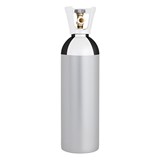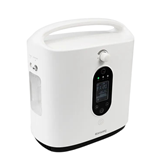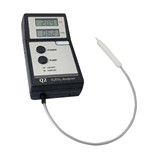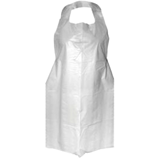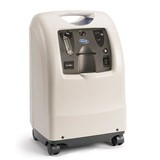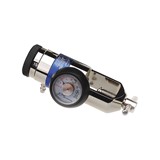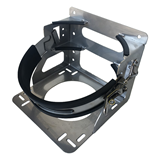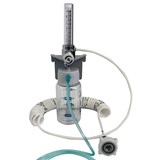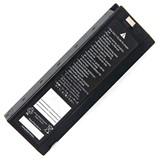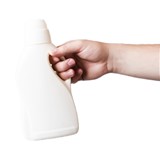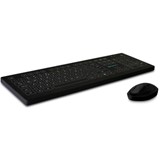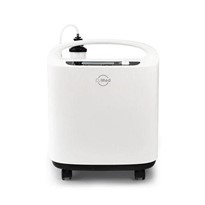Introduction
Medical oxygen concentrators are devices that generate high-purity oxygen from ambient air by filtering out nitrogen, providing an on-demand supply of oxygen for patients. They have become a reliable and cost-effective option for oxygen therapy, especially in settings where traditional oxygen cylinders are impractical or costly. In Australia and New Zealand (ANZ), oxygen concentrators play a vital role in healthcare – from hospitals to home care and aged care facilities – and are regulated as medical devices by authorities (the Therapeutic Goods Administration in Australia and Medsafe in New Zealand). This article explains how oxygen concentrators work, their uses in various care settings, regulatory standards in ANZ, advantages and limitations versus oxygen cylinders, maintenance and safety guidelines, the latest technology trends, and major local suppliers.
How Oxygen Concentrators Work
Oxygen concentrators are electrically powered machines that draw in room air (which is ~21% oxygen) and concentrate it to produce medical-grade oxygen (typically ~90–95% purity). Most medical concentrators use Pressure Swing Adsorption (PSA) technology with molecular sieve beds (usually filled with zeolite pellets) to selectively remove nitrogen from air. In a PSA system, air is compressed and passed through one of two sieve canisters where, under pressure, nitrogen molecules adhere to the zeolite, allowing oxygen (and small amounts of other gases) to pass through. The concentrator then switches to the second canister, while the first is depressurized to release the trapped nitrogen into the exhaust. By cycling between two sieve beds, the device provides a continuous flow of concentrated oxygen to the patient. This process produces an output generally 90–95% pure oxygen at flow rates up to about 5 liters per minute for standard home units (larger or specialized units can achieve higher flows, e.g. 8–10 L/min or more. At very high flow settings, however, the delivered oxygen concentration may fall as the sieve efficiency drops.
Modern concentrators include additional components: filters to remove dust and impurities, a compressor pump, cooling mechanisms, product tanks or reservoirs to even out oxygen flow, flow meters to set the desired L/min flow rate, and alarms/sensors for safety (e.g. oxygen purity below spec, power failure, high temperature). Some portable units use pulse dose delivery, sensing the user’s breathing and delivering oxygen in bursts during inhalation to conserve oxygen and power. For example, newer portable models incorporate intelligent breath-detection technology that triggers oxygen delivery within a fraction of a second of inhalation. This ensures oxygen is delivered at the most effective part of the breath cycle, improving efficiency.
In summary, an oxygen concentrator takes in ambient air and removes nitrogen, outputting an oxygen-enriched gas for therapeutic use. Unlike oxygen cylinders, concentrators do not store oxygen; they produce it continuously as needed using electrical power and can provide an essentially unlimited supply as long as electricity (or battery power) is available.
Use in Hospital Settings
In hospitals, large-scale oxygen needs are usually met by central pipeline systems fed by liquid oxygen tanks or bulk cylinders. However, oxygen concentrators can still have important roles in clinical settings. They are often used in small hospitals, rural clinics, or field hospitals that lack a piped oxygen infrastructure, or as emergency backups. Concentrators can produce oxygen on-site without the logistics of cylinder deliveries, which proved valuable during surges in demand (for example, some hospitals deployed concentrator fleets during the COVID-19 pandemic when cylinder supplies ran low). In general, a single concentrator is typically dedicated to one patient’s use (delivering low-pressure oxygen via nasal cannula or mask). While standard concentrators cannot achieve the very high flow rates or pressures that some acute-care devices require, they are adequate for many patients with moderate oxygen needs.
One advantage in hospitals is that concentrators are portable within the facility – they can be wheeled between wards or to different bedside locations as needed. They provide continuous oxygen as long as they have power, which is useful for extended treatments or in wards where wall oxygen outlets are not available. However, there are limitations: the oxygen concentration from a concentrator is slightly lower than 100% cylinder oxygen (typically ~93% ±3%), and concentrators require electricity and regular maintenance. Hospitals must ensure backup power (or backup oxygen cylinders) are available in case of power failure since most concentrators will stop delivering oxygen during outages (many units do not have built-in long-term batteries). Additionally, multiple concentrators running together can add ambient noise (<50 dBA each, which in aggregate can be noticeable on a busy ward) and heat output. Hospital biomedical engineering departments need to maintain concentrators, including periodic checking of oxygen concentration output, filters, and alarm functions. In critical care or for patients requiring very high flows or 100% O2, concentrators might not be suitable – in such cases, wall oxygen or cylinders are used. Nonetheless, for many inpatient scenarios (e.g. stable patients in recovery, rural hospitals, or long-term care wards), concentrators offer a cost-effective supplemental oxygen source that reduces reliance on cylinder stocks.
Use in Home Care
Home oxygen therapy is a major area where concentrators excel. For patients with chronic respiratory conditions (such as COPD, pulmonary fibrosis, or long-term oxygen therapy needs), an electrically powered concentrator at home provides a convenient and economical source of oxygen without the need for frequent cylinder deliveries. In fact, guidelines suggest that if a patient needs oxygen for more than about 4–5 hours per day, a concentrator is usually the preferred solution. Concentrators for home use are typically stationary units weighing around 15–25 kg (newer models on the lower end of that range), which can be wheeled from room to room. They plug into a standard power outlet and deliver up to 5 L/min of oxygen via tubing and nasal cannula or mask. Many patients also have small portable oxygen concentrators (POCs) for mobility – battery-operated devices that can be carried in a shoulder bag or cart, allowing the patient to leave home while still receiving oxygen. POCs often use pulse flow delivery and typically provide 1–3 L/min equivalent (some newer ones up to 4–6 L/min pulse settings), enough for ambulation and outings.
Compared to traditional oxygen cylinders in the home, concentrators greatly reduce the burden of scheduling refills and transporting heavy tanks. They also eliminate the safety hazards of storing pressurized oxygen at home. Cost-wise, concentrators entail an upfront or rental cost and electricity usage, but over time this is often cheaper than paying for cylinder refills when oxygen is needed long-term. (For instance, an older Australian source noted that if anticipated home oxygen need exceeds ~2 years, purchasing a concentrator is more economical than ongoing cylinder rental.) State health programs and insurers in Australia and New Zealand recognize these benefits: eligible patients can receive concentrators through government-funded schemes (e.g. the Domiciliary Oxygen programs). In Australia, some states even provide small electricity rebates for home concentrator users to offset power costs, acknowledging the continuous power requirement for life-supporting equipment.
Home users and caregivers must be educated on safe operation. Key points include placing the concentrator in a well-ventilated area away from curtains or walls (to avoid overheating or blocking the air intake), and avoiding smoking or open flames in the vicinity (oxygen enrichment increases fire risk). The device should be plugged into an outlet that can handle its electrical load (to prevent tripping circuits). Users are advised to keep a backup oxygen source (such as a small cylinder) for emergencies like power outages or device malfunctions. With proper precautions, home concentrators significantly improve quality of life for respiratory patients by enabling mobility and independence while ensuring they receive continuous oxygen therapy as prescribed.
Use in Aged Care Facilities
Aged care facilities (nursing homes and assisted living) often care for residents who require continuous or intermittent oxygen. Oxygen concentrators are commonly used in these facilities because they provide a steady supply on-site without the logistical challenges of cylinder delivery and storage. In a residential aged care setting, concentrators can be placed in a resident’s room to deliver oxygen via nasal prongs, much like in a home setting. The considerations are similar: adequate placement and power supply, regular maintenance, and fire safety measures. Facility staff should ensure signage is posted (e.g. “Oxygen in Use – No Smoking”) and that concentrators are kept away from heat sources or flammable materials. Many aged care centers maintain a few concentrator units that can be allocated to residents as needed, or work with medical gas suppliers to provide devices and support.
Regulatory-wise, in Australia there is an Oxygen Supplement available to aged care providers to help cover the cost of supplying oxygen therapy to residents with a documented medical need for continuous oxygen. This indicates that concentrators (or equivalent oxygen equipment) are recognized as essential in long-term care and that funding support exists for their use. To utilize this, facilities must have a doctor or nurse practitioner certify the resident’s need, and the facility must either own, hire, or borrow appropriate oxygen equipment. In practice, many aged care providers rent concentrators from medical gas companies for their residents; companies like BOC or Air Liquide Healthcare not only supply the machines but also provide periodic servicing.
Using concentrators in aged care offers safety advantages: unlike heavy cylinders, there’s no risk of tanks falling over or high-pressure accidents, and staff don’t have to handle frequent replacements. However, staff training is crucial – caregivers should know how to operate the concentrator, check that it’s running properly (alarms, flow rate, etc.), and respond to any issues (like power failure or a kinked cannula). As with home use, backup oxygen cylinders are typically kept on hand in case of concentrator failure or evacuation scenarios. Overall, oxygen concentrators allow aged care residents with chronic lung disease or other conditions to receive consistent therapy in a familiar environment, supporting their health and comfort while reducing facility costs over time.
Regulation and Compliance in Australia and New Zealand
Australia (TGA Requirements): In Australia, oxygen concentrators are classified as medical devices and are regulated by the Therapeutic Goods Administration (TGA). Any concentrator supplied in Australia must be included on the Australian Register of Therapeutic Goods (ARTG) after TGA assessment and approval. The TGA considers concentrators to achieve their therapeutic effect by physical means (filtering air), so they fall under medical device regulations rather than medicines. Sellers are also subject to prescription requirements – Australian law mandates that supplemental oxygen is supplied only with a valid prescription, so reputable vendors will require a doctor’s script before dispensing a concentrator for home use. This ensures patients are properly assessed and monitored by healthcare professionals. Moreover, imported devices must conform to relevant Australian Standards for medical electrical equipment and safety. For example, concentrators generally need to meet standards equivalent to IEC 60601-1 (electrical safety) and IEC 80601-2-69 (particular requirements for oxygen concentrators). Compliance with electromagnetic compatibility and manufacturing quality standards is also required. The TGA’s inclusion of a device in the ARTG means the device has appropriate evidence of safety, performance, and quality. All concentrators must come with instructions for use in English and appropriate labeling per the TGA’s medical device regulations. Australian healthcare providers often prefer devices that are TGA-listed and supported by local distributors – for instance, Air Liquide Healthcare emphasizes that all their oxygen therapy equipment is TGA approved.
Standards and Guidelines: Both countries often refer to international standards for oxygen concentrators. ISO 80601-2-69 (the specific standard for oxygen concentrator basic safety and performance) is relevant, as is ISO 8359 (oxygen concentrators for medical use – safety requirements). Australian/New Zealand standards bodies usually adopt these or issue joint AS/NZS standards. Compliance ensures that concentrators have built-in safety features like over-pressure valves, alarms for power failure or low oxygen concentration, fire-retardant materials, etc. Healthcare providers in ANZ also follow clinical guidelines from bodies like the Thoracic Society of Australia and New Zealand (TSANZ) for prescribing and managing oxygen therapy. For example, TSANZ’s guidelines on domiciliary (home) oxygen therapy provide criteria for prescribing oxygen and mention the use of concentrators for long-term therapy.
In summary, regulatory compliance in Australia and New Zealand is aimed at ensuring oxygen concentrators are safe, effective, and used appropriately. Australia’s TGA requires formal device approval and a prescription for use, while New Zealand requires device notification and adherence to general safety standards. Users and healthcare facilities can take comfort in knowing that reputable concentrator models on the market in ANZ have been vetted under these frameworks.
Benefits and Limitations: Oxygen Concentrators vs. Oxygen Cylinders
Oxygen concentrators offer several advantages over traditional compressed oxygen cylinders, but there are also important limitations to consider. The table below summarizes key comparisons between concentrators and cylinders:
|
Aspect |
Oxygen Concentrators |
Oxygen Cylinders |
|---|---|---|
|
Oxygen Source |
On-demand generation of O2 from ambient air (typically ~90–95% purity). No stored volume limit – continuous supply as long as powered. |
Pre-filled with 100% (or high-purity) oxygen gas at high pressure (e.g. ~2000 psi). Finite supply based on cylinder size (must be refilled or replaced when empty). |
|
Power Requirement |
Requires electricity (AC mains for stationary units; battery or DC for portables). Not usable if power fails (unless backup battery/generator available). |
No power needed to deliver oxygen (oxygen flows by cylinder pressure). Usable during power outages, making cylinders a critical backup for concentrator users. |
|
Portability & Mobility |
Generally larger and heavier (stationary units ~15–25 kg, on wheels). Portable concentrators exist (small, ~2–3?kg devices with batteries) for ambulatory use. No time limit except battery life or need for power. |
Portable in the sense of being movable, but cylinders are heavy for equivalent oxygen amounts (e.g. an E-cylinder ~6,800 L O2, weighs ~8 kg). Small portable cylinders (C size, etc.) are available but provide oxygen for only a few hours. User must swap cylinders to continue therapy. |
|
Usage Duration |
Long-term use: Ideal for patients needing oxygen many hours a day. More economical beyond ~4–5 hours/day usage, since it continuously produces oxygen without refills. |
Short-term or intermittent use: Suitable for patients needing oxygen only occasionally or at night, or <5 hours/day. Also used for high-flow short-duration needs. Cylinders are standard for emergency backup and ambulance transport. |
|
Output & Performance |
Continuous flow up to device’s maximum (common home units up to 5 L/min; some up to 10 L/min). Purity ~90%+ at rated flow; may drop if flow exceeds spec. Not designed for very high flows (>15 L/min) or pressures without special equipment. Pulse-dose models match oxygen release to inhalation for efficiency. |
Delivers whatever flow rate is set (limited by regulator, not by oxygen availability until tank runs out). Oxygen from a cylinder is ~99% and can support high flow rates (important for critical care or high-demand situations). Cylinders can also feed high-pressure systems or ventilators directly via regulators. |
|
Maintenance |
Requires routine maintenance: cleaning or replacing filters, checking alarms, and periodic servicing of sieve beds (typically needed after a few years of use). Users should keep unit clean and dust-free. Concentrators have audible alarms for low oxygen output, power failure, etc., which need to be functional. |
Little maintenance by end-user: mainly checking the regulator and connections for leaks. Cylinders themselves are maintained (tested, refilled) by the gas supplier. Users just need to ensure valves, regulators and tubing are in good condition. Managing inventory (ordering refills, safely storing tanks) is a key “maintenance” aspect for cylinders. |
|
Safety Considerations |
No high-pressure oxygen storage (safer in terms of risk of explosion or sudden decompression). However, the oxygen-enriched output increases fire risk in the immediate area – keep away from flames, smoking, grease, etc. Electrical safety is a factor: the concentrator should be on a suitable circuit and kept ventilated to avoid overheating. Noise and heat are minor concerns (compressor noise ~40–50 dB; warm air exhaust). |
Contains oxygen at very high pressure – risk of violent release if cylinder or valve is damaged. Must be secured upright to prevent tipping. As with any oxygen source, fire/explosion risk if exposed to flames or if oil/grease contacts the regulator. Cylinders themselves should be stored in a ventilated area away from heat. Silent in operation. No electrical components. |
|
Logistics & Cost |
Logistical convenience: No refills needed; unlimited supply at home or facility as long as electricity is available. Cost: Higher initial cost (purchase or rental of machine) but low ongoing cost (just electricity and maintenance). Over long durations, cheaper than paying for ongoing cylinder refills. Electricity cost is modest (a 5 L/min concentrator uses ~350–400 W; roughly a few dollars a week in power). Eligible patients may get subsidies for device or power. |
Logistics: Requires regular deliveries or trips to refill. Inconvenient for remote areas or if usage is high (multiple cylinders needed per week). Empty cylinders must be swapped out. Cost: Pay per cylinder refill or rental. Ongoing costs can accumulate significantly for continuous therapy – e.g., several cylinders a week plus rental fees. However, for short-term or occasional use, cylinders can be cost-effective (no device purchase needed). Security deposit or rental fees often apply for cylinders. |
As shown above, oxygen concentrators shine in long-term therapy due to continuous supply and overall cost-effectiveness, whereas oxygen cylinders are indispensable for portability without power, high-flow needs, and as a redundancy/backup. In many cases, patients use a combination: a concentrator at home and cylinders for outings or emergencies. The choice also depends on clinical needs: for example, a patient requiring 15 L/min non-rebreather mask oxygen acutely will need cylinders or wall oxygen, not a standard concentrator. On the other hand, a patient on 2 L/min overnight is very well served by a concentrator at home.
Maintenance and Safety Considerations
Routine Maintenance: Proper maintenance of oxygen concentrators is essential to ensure they operate safely and effectively over time. Users and healthcare providers should follow the manufacturer’s guidelines, but general best practices include:
-
Filter Cleaning/Replacement: Concentrators have external intake filters (and sometimes internal bacteria filters). These should be cleaned at regular intervals (often weekly to monthly, depending on dust conditions) or as instructed. For example, a common recommendation is to rinse the particle filter under running water about once per month (or more frequently in dusty environments), then let it air dry completely before reinsertings. Clogged filters can reduce oxygen output and stress the compressor, so keeping them clean is vital.
-
General Cleaning: The exterior of the unit should be wiped down periodically (e.g. weekly) with a damp cloth to remove dust. Vents should be kept clear. Avoid using harsh chemicals or solvents on the machine. If the device has a humidifier bottle (some concentrators for home use can attach a water bottle for humidity), that should be cleaned and refilled with sterile water daily to prevent microbial growth.
-
Nasal Cannula and Tubing: These accessories should be regularly cleaned and replaced. Nasal cannulas are typically replaced every 1–2 weeks or if they become visibly soiled or stiff. They can be washed in warm soapy water, rinsed, and disinfected (some advise a soak in 1:10 vinegar solution as a disinfectant) then thoroughly rinsed and dried. Long oxygen extension tubing should be inspected for kinks or cracks daily and replaced every few months or as needed. Keeping tubing less than about 10 meters (30 feet) helps maintain flow and oxygen concentration.
-
Professional Servicing: Concentrators generally require servicing by a technician approximately once per year (or per manufacturer schedule). This servicing may include checking the oxygen concentration with an analyzer (ensuring it’s delivering >90% O2 at set flow), replacing or recharging sieve beds if performance has degraded, checking the compressor function and pressure, and verifying alarm systems. Many suppliers include filter changes and basic service in rental agreements or annual contracts. If a device’s oxygen purity falls below acceptable levels, the sieve material might need replacement (typically the zeolite sieves last a few years). Users should respond to any “Check Oxygen” or “Service Required” alarm by contacting their supplier promptly.
-
Avoiding Dust and Smoke: To prolong the life of the concentrator, it should be operated in a clean environment. Keep it off the floor (if possible) and away from curtains or drapes that might shed lint into it. Avoid smoking near the unit – not only is this a fire hazard, but smoke particles can clog filters quickly. Pet hair and dust are common culprits in blocking concentrator air intakes, so frequent cleaning or a pre-filter may be necessary in homes with pets or lots of dust.
Safety Considerations: Oxygen itself is not explosive, but it vigorously supports combustion. Whether from a concentrator or a cylinder, high-concentration oxygen can turn a small flame into a dangerous fire. Therefore, general oxygen safety rules apply:
-
No Smoking or Open Flames: Never allow smoking in the same room as an oxygen concentrator in use. Keep candles, gas stoves, fireplaces, or any open flame at least 3+ meters away from where oxygen is being delivered. Even a device like an e-cigarette or a sparking toy can be hazardous in an oxygen-rich environment.
-
Electrical Safety: Concentrators should be plugged directly into a wall outlet (not overloaded power boards) on a circuit that can handle their wattage. Using a surge protector can be wise in areas with unstable power, to protect the machine’s electronics. If using a long extension cord or oxygen tubing, arrange it to avoid tripping hazards. In New Zealand, compliance with the Electricity Act means concentrators must have been tested/certified – users should only use properly certified devices and the original power cord/adapter.
-
Placement and Ventilation: As noted, keep the device in an open area, never inside a closet or confined space. The concentrator generates heat as a byproduct; if it’s in a tight space, heat can build up and possibly pose a fire risk or cause the unit to overheat and shut down. Ensure at least a few inches of space around it, especially near cooling vents or air intake. Do not drape clothes or blankets over an oxygen concentrator (this has caused fires in the past due to heat buildup and concentrated oxygen under the fabric).
-
Fire Hazards (Grease/Oil): Keep oils, greases, aerosol sprays, and solvents away from the oxygen unit and any oxygen tubing or connections. Oil or grease can spontaneously ignite in high oxygen concentrations. For example, one should never use petroleum-based ointments on the face while using oxygen; if moisturizer is needed for the nose, water-based products are recommended.
-
Secure Storage (for Cylinders): If using backup oxygen cylinders along with a concentrator, those cylinders must be secured upright to prevent tipping, and stored in a cool, ventilated place away from flammable materials.
-
Alarms and Backup Plan: Ensure the concentrator’s alarm sounds if power is cut or if the oxygen flow is interrupted. Test this periodically (e.g., unplug the machine briefly to hear the power failure alarm). Both patient and caregivers should have a clear plan for what to do if the concentrator fails or power goes out – typically, switch to a backup cylinder and call the supplier or emergency services if needed. In residential aged care, staff should conduct drills or at least have quick access to backup oxygen in case of device failure.
By adhering to these maintenance and safety guidelines, users can greatly reduce the risk of device problems and ensure a continuous, safe oxygen supply. Well-maintained concentrators can operate reliably for many years, providing life-sustaining therapy to those in need.
Latest Innovations and Technology Trends
Oxygen concentrator technology has evolved significantly, with recent innovations focusing on portability, smart features, and reliability:
-
Improved Portability: Modern portable oxygen concentrators are lighter, smaller, and have longer battery life than earlier models. For instance, newly released devices like the Inogen Rove 4 or Inogen Rove 6 weigh only ~1.3 kg to 2.1 kg including batteries, yet can deliver equivalent oxygen output to older 3–5 kg machines. Some models offer 8 or 16-cell battery options, allowing 4–8 hours of use on a charge, and can be recharged in the car or via solar panels – catering to active patients who wish to travel. There are even wearable concentrators that can be slung over the shoulder or worn as a backpack, reflecting a general trend towards more patient mobility.
-
Higher Oxygen Output in Portables: Traditionally, portable concentrators had limited flow (often up to setting 3 or ~3 L/min pulse). Newer technology has increased this: for example, the CAIRE Freestyle Comfort and Respironics SimplyGo Mini provide higher pulse settings, and the latest Inogen units introduced a setting 4 and 5. This higher output in a small form factor is enabled by better sieve materials, more efficient compressors, and improved pulse-dose algorithms. Some high-flow stationary concentrators now go up to 10 L/min continuous for patients with greater needs, and there are also specialized dual-flow concentrators that can split flow to two patients simultaneously for clinic use.
-
Smart Connectivity and Monitoring: Many concentrators now come with digital controls and connectivity features. Manufacturers like CAIRE and GCE have introduced telemonitoring platforms (e.g. CAIRE’s myCAIRE® and GCE’s Clarity system) that connect concentrators via Bluetooth or cellular modules to send data on usage, performance, and battery status to a cloud portal. This allows healthcare providers or equipment providers to remotely monitor if a patient is using their device properly and if the device is operating within specs. Alerts can be generated if, for example, the oxygen purity drops or the device hasn’t been used as expected – enabling proactive maintenance or patient follow-up. Some devices also have companion mobile apps for patients to see their battery level, O2 flow rate, and reminders for filter cleaning.
-
Intelligent Oxygen Delivery: Advances in sensor and software technology have led to smarter oxygen delivery systems. Auto-adjusting pulse dose is one example: devices can detect changes in the patient’s breathing rate or activity level and adjust the bolus size of oxygen accordingly. Inogen’s patented Intelligent Delivery Technology is noted for very fast trigger response (delivering the oxygen pulse within 250 milliseconds of the start of inhalation), which ensures efficacy even during rapid breathing. Some concentrators also have algorithms to automatically switch from pulse mode to continuous flow if they detect no breath (for instance, during sleep). This kind of adaptability improves patient oxygenation and comfort.
-
Noise and Efficiency Improvements: There is ongoing engineering to make concentrators quieter and more energy-efficient. New designs of compressors and sound insulation have reduced noise levels – some portable units operate around 37 dB on a low setting (almost as quiet as a library). Lower power consumption is also achieved through efficient motors and better adsorption cycle control, which is important for extending battery life. Researchers have explored Vacuum Pressure Swing Adsorption (VPSA), which applies a vacuum to more fully clear nitrogen from the sieve beds, potentially increasing oxygen purity or reducing power usage for the same output.
-
Durability and “Rugged” Designs: With the pandemic highlighting oxygen needs in low-resource areas, there’s been interest in making concentrators more robust to environmental challenges. Projects like UNICEF’s “Resilient Oxygen Concentrator” aim to develop devices that can better handle hot climates, unstable power, and continuous running without failure. Some innovations include more tolerant sieve materials, better cooling systems, and built-in voltage stabilizers. We are also seeing longer expected lifespans – for example, one manufacturer advertises an 8-year service life on their new model due to improved components.
-
Integration with Other Therapies: New concentrator designs sometimes integrate additional features like nebulizer ports (to administer aerosol medications using the oxygen flow), or connectivity with CPAP/BiPAP devices for patients who need both oxygen and positive airway pressure at night (e.g., concentrators that can signal a CPAP to boost oxygen, etc.). While not yet common, we are likely to see more blending of respiratory therapies in one unit or system for home care.
-
Liquid Oxygen and Concentrator Hybrids: A notable trend internationally is the complementary use of concentrators with liquid oxygen for patients requiring portability beyond battery limits. Though liquid oxygen is not widely used in Australia currently, technology is being developed where a concentrator can help refill a small liquid oxygen reservoir at home, combining the advantages of both (the patient can then use a lightweight portable LOX flask for a day out, filled by the concentrator system overnight). This hybrid approach may gain traction if liquid oxygen infrastructure grows.
Overall, the trajectory of innovation in oxygen concentrators is making them more user-friendly, more adaptable, and closer to “plug-and-play” appliances. For patients in Australia and New Zealand, this means more options that fit their lifestyle – whether an elderly person in an aged care facility who needs a quiet, steady oxygen source, or an active adult who wants to travel while on oxygen. As technology improves, oxygen concentrators are likely to become even smaller, smarter, and more energy-efficient, further solidifying their role in oxygen therapy worldwide.
To conclude, Australia and New Zealand have a well-established network of oxygen concentrator suppliers – from large gas companies like BOC and Air Liquide, which provide comprehensive service packages, to specialized retailers offering the latest portable devices. This robust supply chain, coupled with regulatory oversight, means that healthcare professionals and patients in ANZ can access quality oxygen concentrators tailored to hospital, home, or aged care needs with confidence in their safety and efficacy.




-720x400.jpg)


